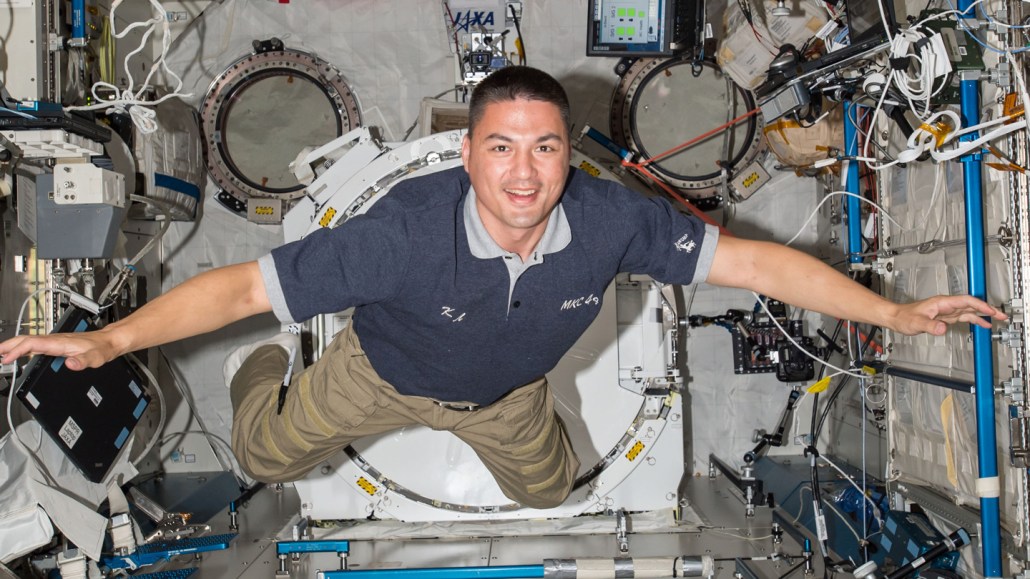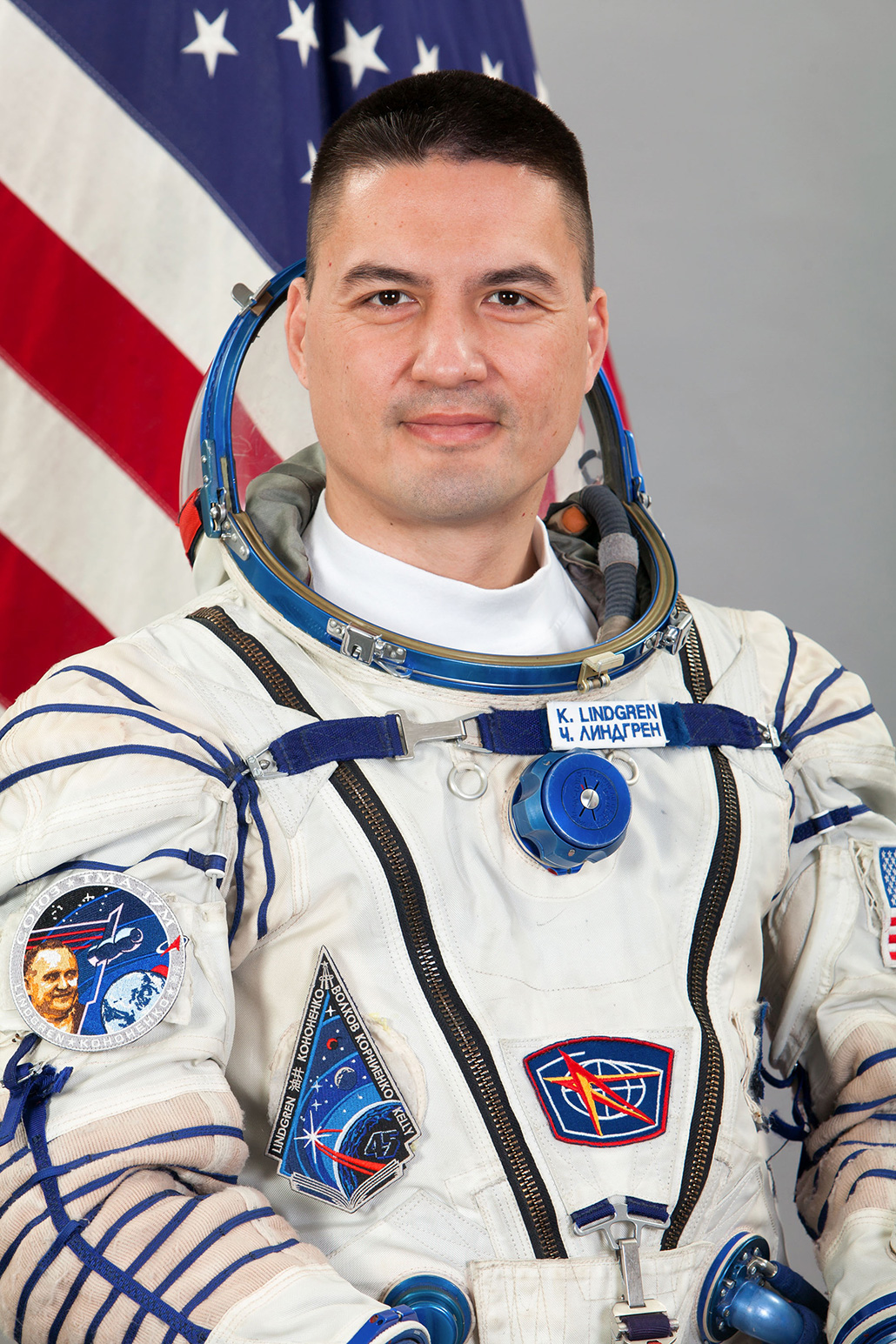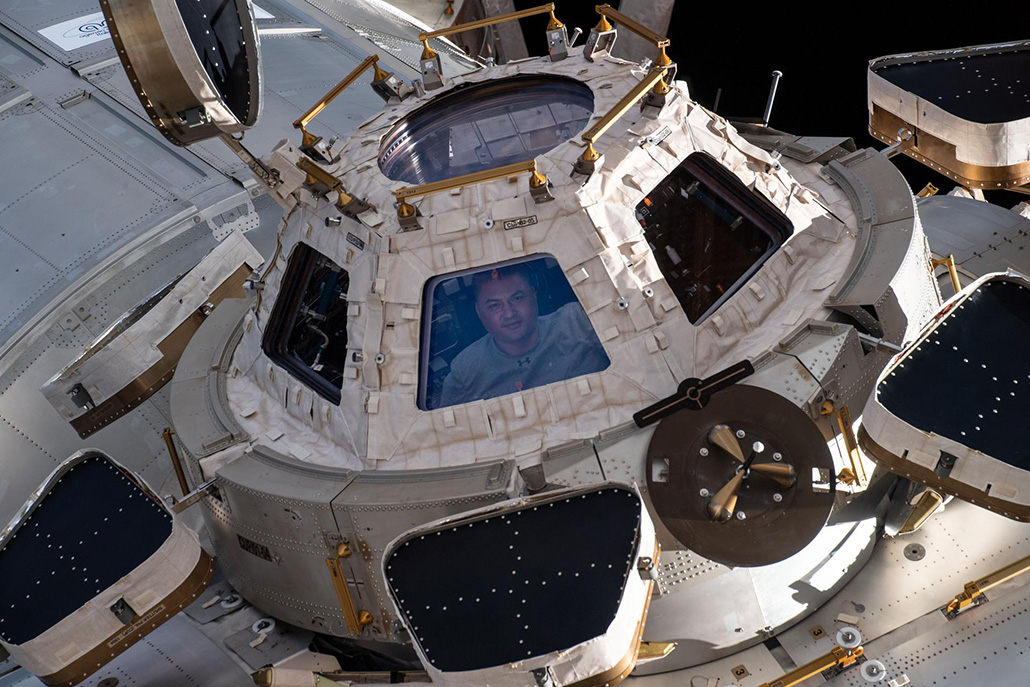This astronaut took a winding journey into space
Kjell Lindgren treated NASA crew members before joining their ranks

Astronaut Kjell Lindrgren has flown to space twice, including this trip to the International Space Station in 2015. He sent this picture back to the ground along with the message, “It's already been a week! Time is flying...and so am I!”
NASA
Share this:
- Share via email (Opens in new window) Email
- Click to share on Facebook (Opens in new window) Facebook
- Click to share on X (Opens in new window) X
- Click to share on Pinterest (Opens in new window) Pinterest
- Click to share on Reddit (Opens in new window) Reddit
- Share to Google Classroom (Opens in new window) Google Classroom
- Click to print (Opens in new window) Print
Kjell Lindgren wanted to be an astronaut for as long as he could remember. He spent much of his childhood abroad with his family on U.S. Air Force bases. “The idea of becoming an astronaut by serving as an Air Force test pilot seemed like the path that I needed to follow,” says Lindgren. After all, many astronauts have come from that background.
Lindgren’s hopes of becoming an astronaut, though, would come to a sudden halt when he was diagnosed with asthma, a serious respiratory disease, after graduating from the U.S. Air Force Academy and enrolling in pilot training. The Air Force decided to medically discharge him.
And so Lindgren pivoted to medical school, eventually specializing in emergency medicine. As part of his training, he was retested for asthma. This time, the tests said that he didn’t have the condition. Lindgren’s dreams of spaceflight returned.
Lindgren worked as a flight surgeon at NASA, treating crews that were preparing for spaceflight. Then, in 2009, he was selected as a NASA astronaut at the Johnson Space Center in Houston, Texas. Since then, Lindgren has flown into space twice, where he performed more than 100 scientific experiments. On his most recent trip aboard the International Space Station in 2022, he served as the commander for SpaceX Crew 4 for 170 days. Lindgren is now a member of the Artemis Team, a group of scientists and astronauts working together to send people back to the moon in 2024. In this interview, he shares his experiences and advice with Science News Explores. (This interview has been edited for content and readability.)
Q: How did you get where you are today?
A: My passion for space came from reading science fiction and watching science fiction movies. I grew up as a Star Wars fan. Then, in the second grade, our teacher wheeled the television into our classroom and we watched the very first launch of the STS-1 space shuttle Columbia on April 12, 1981. And that’s when this passion really grabbed me. It became clear that getting to live and work in space wasn’t just for the movies or for books. It was a real thing, and I think that’s really when I latched on to that dream.
There was no Internet back then. So I really sought out a path by reading the biographies of our early astronauts. Most of them seemed to be test pilots, and so that looked like a path to follow. I worked really hard in high school and had the privilege of attending the U.S. Air Force Academy. I navigated kind of a crazy path that ultimately led to this opportunity.
The number one thing that opened doors for me and established opportunities was just hard work. I think that a willingness to put in the work is truly one of the secrets to success. When people see that, they’ll want to invest in you and work with you. By working hard, I came across really cool opportunities that weren’t necessarily on the path that I had dreamed of for myself.
One of those was the opportunity to become a doctor. The hard work I did as a doctor paid off and ultimately led to this opportunity. I think the other thing that was important was reading. Read as much as you can about the things that you’re passionate about. And then as you’re reading, find other things that interest you, and read about those things. The practice of reading helps stimulate your brain. It was a critical part of my journey. In fact, it was so important that I put a book on my very first mission patch. It forms the foundation of the patch, as reading has formed the foundation of my professional career.
Q: How do you get your best ideas?

A: By reading about things that I’m interested in and by learning about things outside of my area of expertise. Talking with people and understanding what they do and how they think is also important. I think that’s one of the benefits of our astronaut office currently. Not everybody is a test pilot. We have folks that have come to this job as oceanographers, microbiologists, aerospace engineers, doctors and pilots. We are all faced with very similar problems when we are on the space station or when we are in training. But we approach those problems in different ways. I think our backgrounds and our experiences all flavor how we approach things and how we come up with new ideas. Taking that opportunity to think about things from a different perspective and talking with people about how they approach problems is really fertile ground for coming up with new solutions and ideas.
Q: What’s one of your biggest successes?
A: The job of an astronaut is ultimately to fly into space and do the work up there. All the science, the research and the repairs that we are asked to do. And to maintain this amazing orbital outpost that we have in low Earth orbit, the International Space Station. But we also do the science and the research that people from all over the world have come up with to make life better back here on Earth. It also allows us to explore the solar system. It’s an amazing privilege to be a part of that team. To be the eyes and hands and ears for scientists and our flight controllers back here on the ground.
During my most recent mission, we had a research project that was very complex. We ran into several instances where we encountered obstacles, and it made things very difficult. We had to figure out a path forward. I tried to be a good teammate, a good leader and a good scientist by sharing my expertise. I believe all of these things helped us complete the project. It was really one of my most gratifying professional experiences in spaceflight. I think when it comes to tasks we’re proud of, we immediately think of something that went smoothly. I think it’s really gratifying, though, when we meet challenges and are able to overcome those.
It’s a great lesson in resilience for when we encounter obstacles at school, at our jobs or even at home. We can choose to stay frustrated or depressed. Or we can see our obstacles as an opportunity to overcome a problem and work toward success. I think your attitude during challenging times is really an important part of life. Learning to approach problems with the mindset of a good teammate and a good leader is an important life lesson.

Q: What’s one of your biggest failures and how did you get past that?
A: Being medically discharged from the Air Force was a very challenging time. It obliterated this dream of not only becoming a pilot but really the dream of getting to serve as an astronaut at any point. All of the work that I had done up to that point felt pretty empty. In my mind, there was really no path from being medically discharged from the Air Force to someday becoming an astronaut. That was a time when I had to figure out what the next step was. And that, of course, is a tremendous obstacle. I really had to lean on my family, friends and especially my faith to determine what the future was going to look like.
My pilot training class graduated a year after we had started. And that was a bittersweet time. The joy of seeing them go on to pursue their dreams but also having to leave that behind. But the very next day, I received my acceptance to the University of Colorado for medical school in the mail. It was not this dream that I had of becoming an astronaut but a new path. It was one that would allow me to challenge myself and serve others.
I am incredibly grateful to have these opportunities to live and work in space. I’m fairly certain that I would not be in this job today if I had become a pilot. What I once saw as a curse was truly a blessing. My whole journey pivoted on being discharged from the Air Force. It was a lesson in recognizing that an obstacle may not be as bad as you think it is. How trying to have a great attitude and figuring out what is next on that path is really important.
Q: What do you like to do in your spare time?
A: I love spending time with my family. We love the outdoors. We all volunteer at a local nature center for conservation. We help give tours, with kayaking and those sorts of things. I’m an assistant Scoutmaster for my son’s troop. We also love camping. Both of my boys and I got to do a kind of a landmark or a milestone scouting experience called the Philmont Scout Ranch High Adventure. We went to New Mexico and spent 10 days hiking in the backcountry. We carried 40-pound packs over 60 to 75 miles. That was an extraordinary experience and an opportunity to spend time with family. I think especially now, having now returned from this past space station mission, I’m really trying to have us spend time together.






